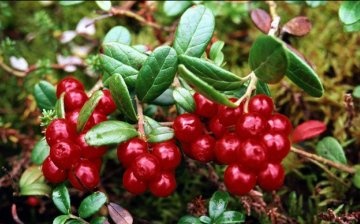Lingonberry berries and leaves are very useful
Lingonberry is an evergreen small shrub that prefers to grow in coniferous or mixed forests. The lingonberry leaves are elongated, leathery, shiny, the stem is branched, the flowers are white-pink, and the berries that appear in August-September are bright red and large.
Lingonberry blooms from May to June, often in cool weather, for which it is very loved by beekeepers and bees. Lingonberry honey is fragrant, delicate, transparent amber color. And due to the fact that the lingonberry contains a lot of useful substances, it has long won its place in folk medicine, and not only berries, but also lingonberry leaves are useful and healing.
In the composition of lingonberry berries:
- organic acids (salicylic, citric, malic, etc.);
- carbohydrates;
- carotene, pectin, tannins;
- vitamins;
- up to 15% sugars (fructose, glucose, sucrose);
- minerals (calcium, manganese, potassium, iron, magnesium, phosphorus).
Lingonberry leaves:
- tannins;
- hydroquinone;
- arbutin;
- carboxylic, gallic, tartaric, quinic acids;
- tannin;
- vitamin C.
For medicinal and prophylactic purposes, decoctions and teas from lingonberry leaves are prepared. They are useful in diseases of the genitourinary system, urinary incontinence in children, rheumatism, diabetes mellitus, gout, kidney disease. Such teas and teas well remove fatigue and restore strength.
Berries and lingonberry juice are useful for avi and hypovitaminosis, high blood pressure, gastritis, accompanied by low acidity, anemia, neurosis, rheumatism, and also strengthen blood vessels and improve vision. Lingonberry decoctions and infusions are good astringent, diuretic and antiseptic agents. They perfectly quench thirst when a person is tormented by a high temperature.




It is very hot for lingonberries, there is practically none even in the forest, I bought seedlings of garden lingonberries in the store, supposedly adapted to our region, still died in June, but the main heat began.